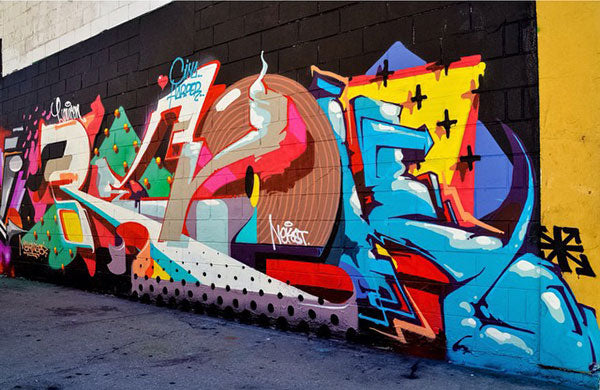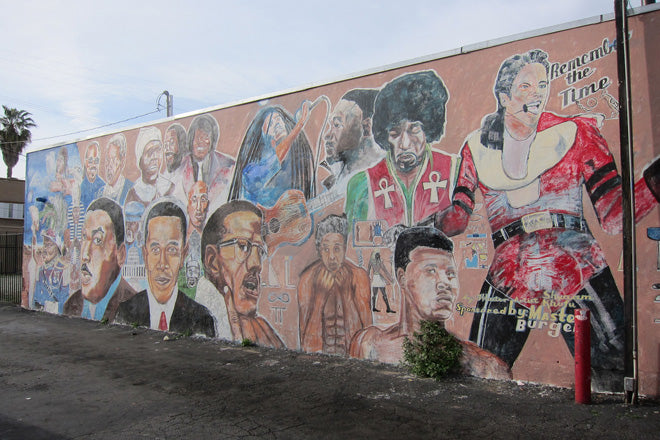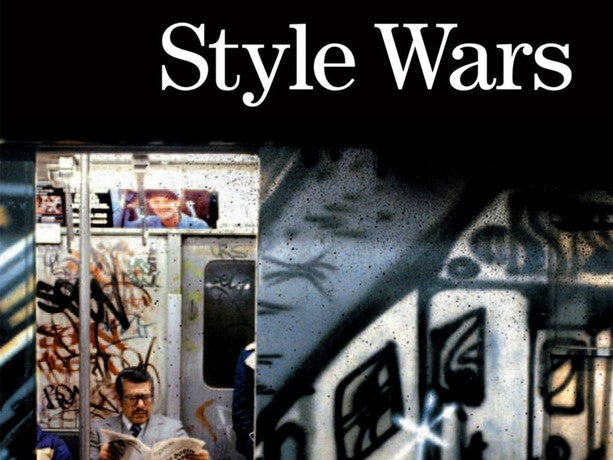Los Angeles, once considered to be the mural destination, hit a legally-sanctioned dry-spell in the first decade of the 21st century. With David Siqueiros’ America Tropical from 1932 and Judith Baca’s massive project from the 80’s, The Great Wall of Los Angeles,as landmark contributions to establishing L.A.’s mural identity, a mural ban created challenges for hungry artists in the early 2000s. Even so, artists continued to use concrete as their canvases, whether illegally or not, to create socially-conscious and expressive work for public consumption. And many artists found success in more mainstream venues or through collaborations with businesses, events, and celebrities.

The 2002 Los Angeles Citywide Mural Ban
As L.A entered the new millennium, its street artists did so with a significant hurdle on the horizon. After years of bickering between the city and outdoor advertising agencies who felt they deserved more visibility within the landscape, the city opted to ban any sort of signage on public buildings – except within designated sign districts. Murals were covered under this ban, which led to a decade of debates as to what distinguishes a sign from art. The ban’s caveat carved out enough room for advertisers to plaster billboards within designated areas, but artists, whose imagery was not commercially-driven, largely were left out. From 2012 to 2013, when the city finally lifted the ban, artists struggled to create murals even on private property due to the intense process of gaining legal permission.
LA Weekly calls the “11-year moratorium on murals” a “dark phase of public art development.”

The outcome of this ban was that street artists either had to create sanctioned work in consultation with private property owners – and cut through a lot of red tape – or continue illegal tagging. With the growing scarcity of spaces in light of the mural ban and heftier penalties for taggers, many street artists feared that the next generation of artists would not have the open spaces or freedom to hone their craft.

21st-century Writers Take to the Streets
The mural ban may have squashed sanctioned public art, but several independent artists and collectives still took to the streets in the dark of night. One group to emerge in the first decade of the 21st century was the Metro Transit Assassins (MTA). Their name was an intentional jab at the Metro Transit Authority, which
“cut the region’s heavily used bus service for poor minorities” in favor of funding “far less utilized rail lines” (LA Weekly).

The name also spoke to the brazenness of their work. In 2008, the MTA used gallons and gallons of paint to spell out “MTA” on the concrete walls of the Los Angeles River. Spanning a half-mile with letters that were 30’ tall, this tag is believed to have been among the largest ever – before it was painted over by the Army Corps of Engineers as part of a large repaint project. Though the tag resulted in $3.7 million worth of damage, members settled for far less in exchange for community service, a smaller fine, and perhaps the bigger challenge: an agreement to stay away from any sort of tagging for five years.

Another graffiti group, the Seventh Letter Crew, combines the talents of over 100 members toward a less illegal end. Founded in 1999 by a writer known as Eklips, the group represents the union of two other graffiti collectives, Mad Society Kings (MSK) and Art Work Rebels/ Angels Will Rise (AWR). Group members include noted writers such as Saber, Revok, Zes, and Push. What distinguishes the group the most is its desire to push graffiti beyond the realm of illicit activity. The partnerships between members of the Seventh Letter Gallery / Crew and big-name brands including Nike and Adidas have spawned some criticism, however, from those who see this move as selling out. In response, Elkips remarks,
“Seventh Letter is positive. Making big moves and showing kids that there is hope, you can have something for yourself” (LA Weekly).



Street Artists Attempting to Redefine Graffiti for the Public
During this fraught decade, some voices emerged to make positive change or push back against authority. In 2007, three organizations joined forces to give dozens of graffiti artist from around the world a legally-sanctioned canvas for a few days. Man One, owner of Crewest gallery, teamed up with Friends of the L.A. River and International Meeting of Styles (MoS) for a two-day LA “Meeting of Styles” event. The event transformed the blank, gray walls of the river into a lively visual narrative courtesy of over 100 graffiti artists. Though the event was intended to drum up interest in how artists could remake the river walls, city officials and community members still looked down on the project. Graffiti was still viewed as a problem, and the artwork eventually was removed, with one city official calling the project “a public nuisance and potential safety hazard.”

Saber, a legendary solo writer in addition to his work with Seventh Letter Crew, also contributed to the discussion about street art. After establishing his reputation at the age of 21 by creating the largest graffiti piece along the concrete walls of the L.A. River, he moved on to a career that has included both critical, socially-engaged works and commercial success. Citing
“everything that made me stop and listen”
as influences, the artist explains in an interview with Arrested Motion that he looks to peers, like David Choe and Phase2, for inspiration, as well as European masters like Jan Van Eyck and Casper David Friedrich. Saber has lent his skills to Hyundai and other brands, while also showing his work in galleries as of 2002. In 2010, he earned the animosity of right-wing groups for painting over a U.S. flag in order to bring attention to the deep fissures in the national health system.
Los Angeles Murals, Graffiti and Street Art Into the Future
While the first decade of the new century proved frustrating for many Los Angeles street artists, it did set the stage for a needed conversation on how artists and the city landscape could partner in the decade to follow. Groups like MTA mounted impressive but illicit street art feats while the Seventh Letter Crew’s members sought out commercial work. For a city that touted itself as the mural capital, the early 2000s knocked back L.A., in some respects. The constant dancing around stricter citywide rules eventually hit its breaking point in the next decade, when the mural ban was lifted and L.A. street artists could reclaim lost territory.
Sources:
*meeting of styles image source.






Leave a comment (all fields required)